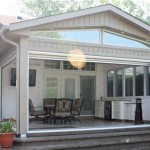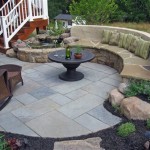How To Make Cement for a Patio: A Comprehensive Guide
Creating a durable and aesthetically pleasing patio often involves the use of cement. While pre-mixed concrete options are readily available, understanding how to make cement from scratch allows for greater control over the consistency, strength, and overall quality of the final product. This article provides a detailed guide on the process of making cement for a patio, covering the necessary materials, tools, and techniques required to achieve a successful outcome. It is crucial to note, however, that "cement" is technically an ingredient used to *make* concrete. Concrete is the actual material used for patios, which is a mixture of cement, aggregate (sand and gravel), and water. This article will detail how to mix concrete for patio use.
Before embarking on this project, it is essential to prioritize safety. Wear appropriate personal protective equipment (PPE), including safety glasses, dust masks, and work gloves. Mixing concrete creates dust that can irritate the lungs and eyes, and direct skin contact with wet concrete can cause burns. Work in a well-ventilated area or outdoors to minimize exposure to dust and fumes.
Key Point 1: Gathering Materials and Tools
The first step in making concrete for a patio is to gather all the necessary materials and tools. This ensures a smooth and efficient workflow and minimizes interruptions during the mixing process. Missing an essential item can lead to delays and potentially compromise the quality of the concrete.
Materials: These are the fundamental building blocks of concrete, and proper selection is crucial for achieving desired strength and durability.
- Portland Cement: This is the binding agent in concrete. Choose Type I Portland cement for general-purpose applications. It is readily available at most hardware stores and building supply centers.
- Fine Aggregate (Sand): Sand provides volume and workability to the concrete mix. Use clean, sharp sand that is free from organic matter and debris. Testing the sand for silt content is recommended, as excessive silt can weaken the concrete.
- Coarse Aggregate (Gravel): Gravel adds strength and reduces shrinkage in the concrete. Select gravel with a size range appropriate for the thickness of the patio slab. Generally, gravel sizes ranging from 3/8 inch to 3/4 inch are suitable. Ensure the gravel is also clean and free of contaminants.
- Water: Use clean, potable water. The amount of water added significantly affects the concrete's strength and workability. Using too much water weakens the concrete, while too little water makes it difficult to work with.
- Optional Additives: Depending on the specific requirements of the patio project, additives can be used to enhance certain properties of the concrete. Air-entraining agents improve freeze-thaw resistance, while water reducers can increase workability without adding excess water. Consult with a concrete specialist for advice on selecting appropriate additives.
Tools: Having the right tools is essential for efficient and safe concrete mixing.
- Mixing Container: A concrete mixer (either electric or gas-powered) is highly recommended for larger patio projects. For smaller projects, a wheelbarrow or a large mixing tub can be used. A concrete mixer ensures thorough mixing and reduces the physical strain of manual mixing.
- Shovels: Use sturdy shovels for measuring and transferring the cement, sand, and gravel. A square-point shovel is ideal for scooping and mixing materials.
- Buckets or Measuring Containers: Accurate measurement of the ingredients is crucial for achieving a consistent concrete mix. Use buckets or measuring containers to ensure the correct proportions of cement, sand, gravel, and water.
- Water Hose with Adjustable Nozzle: A water hose provides a controlled water supply for mixing the concrete. An adjustable nozzle allows for precise control of the water flow.
- Trowel or Float: A trowel or float is used for smoothing and finishing the concrete surface after it has been poured. Choose a trowel size and type appropriate for the desired finish.
- Level: A level is essential for ensuring that the patio surface is flat and even. Use a long level (at least 4 feet) for verifying the overall grade of the patio.
- Screed Board: A screed board is a long, straight piece of wood or metal used for leveling the concrete surface after it has been poured.
- Wheelbarrow: A wheelbarrow is useful for transporting the mixed concrete from the mixing area to the pour site.
Key Point 2: Determining the Concrete Mix Ratio
The concrete mix ratio refers to the proportions of cement, sand, and gravel used in the mix. The most common mix ratio for general-purpose concrete, suitable for patio construction, is a 1:2:4 ratio. This means one part cement, two parts sand, and four parts gravel, by volume. This ratio provides a good balance of strength, workability, and cost-effectiveness.
It is crucial to understand that this is a baseline ratio. Adjustments may be necessary depending on specific project requirements and the properties of the available materials. For example, if the sand is particularly fine, the ratio of sand to gravel may need to be adjusted slightly to achieve the desired consistency.
Calculating Material Quantities: Determine the volume of concrete needed for the patio project. This is calculated by multiplying the length, width, and thickness of the patio slab. The units must be consistent (e.g., all in feet). Once the total volume is known, calculate the quantities of each ingredient based on the chosen mix ratio. For example, if the total volume of concrete needed is 1 cubic yard, then you would need approximately 0.25 cubic yards of cement, 0.5 cubic yards of sand, and 1 cubic yard of gravel, plus the appropriate amount of water.
Water-Cement Ratio: The water-cement ratio is the ratio of water to cement, by weight. This ratio is a critical factor in determining the strength and durability of the concrete. A lower water-cement ratio generally results in stronger concrete, but it can also make the mix more difficult to work with. A typical water-cement ratio for patio concrete ranges from 0.45 to 0.60. This means that for every pound of cement, you would use between 0.45 and 0.60 pounds of water. It's important to remember that one gallon of water weighs approximately 8.34 pounds.
Key Point 3: Mixing the Concrete
Proper mixing is essential for ensuring that all the ingredients are thoroughly combined and that the concrete has the desired consistency. Whether using a concrete mixer or mixing by hand, follow these steps carefully:
Using a Concrete Mixer: This is the recommended method for larger projects as it provides more consistent results and reduces physical exertion.
- Pre-wet the Mixer: Before adding any ingredients, add a small amount of water to the mixer to lubricate the drum and prevent the concrete from sticking.
- Add Gravel: Add approximately half of the gravel to the mixer.
- Add Cement: Add all of the cement to the mixer.
- Add Sand: Add all of the sand to the mixer.
- Mix Dry Ingredients: Allow the dry ingredients to mix for a minute or two until they are thoroughly combined.
- Add Water Gradually: Slowly add water to the mixer while it is running. Add water gradually until the concrete reaches the desired consistency. Avoid adding too much water at once, as this can weaken the concrete.
- Mix Thoroughly: Allow the concrete to mix for at least five minutes, or until all the ingredients are evenly distributed and the concrete has a uniform consistency.
- Check Consistency: The concrete should be workable but not too soupy. It should hold its shape when a handful is squeezed. If the concrete is too dry, add a small amount of water. If it is too wet, add a small amount of cement and aggregate, maintaining the proper mix ratio.
Mixing by Hand (using a wheelbarrow or mixing tub): This method is suitable for smaller projects, but it requires more physical effort.
- Combine Dry Ingredients: In the wheelbarrow or mixing tub, combine the cement, sand, and gravel in the correct proportions. Use a shovel to thoroughly mix the dry ingredients until they are evenly distributed.
- Create a Well: Create a well in the center of the dry ingredients.
- Add Water Gradually: Slowly pour water into the well while mixing the dry ingredients with a shovel. Work from the outside of the well inward, gradually incorporating the dry ingredients into the water.
- Mix Thoroughly: Continue mixing until all the ingredients are evenly distributed and the concrete has a uniform consistency. This may take 10-15 minutes of vigorous mixing.
- Check Consistency: As with machine mixing, the concrete should be workable but not too soupy. It should hold its shape when a handful is squeezed. Adjust the water content as needed.
Placement and Finishing: Once the concrete is mixed, it should be placed immediately. Do not allow the concrete to sit for an extended period before placement. Transport the concrete to the pour site using a wheelbarrow or buckets. Spread the concrete evenly within the prepared formwork, ensuring that it fills all corners and edges. Use a shovel or rake to distribute the concrete and eliminate any air pockets.
Leveling and Screeding: After the concrete has been placed, use a screed board to level the surface. Rest the screed board on the formwork edges and pull it across the concrete surface, removing any excess concrete and filling in any low spots. Overlap each pass of the screed board by a few inches to ensure a smooth and even surface.
Floating and Troweling: After the concrete has been screeded, use a float to further smooth the surface and consolidate the aggregate. A float is a flat, rectangular tool that is used to remove any minor imperfections and create a uniform texture. Allow the concrete to set slightly before floating. Do not float the concrete while it is still wet and soupy. After floating, use a trowel to create a smooth, hard finish. Troweling is typically done in multiple passes, with each pass applying more pressure. The timing of troweling is crucial. Troweling too early can create a weak surface, while troweling too late can make it difficult to achieve a smooth finish.
Curing: Curing is the process of maintaining moisture in the concrete to allow it to hydrate properly and gain strength. Proper curing is essential for achieving durable and long-lasting concrete. Begin curing the concrete as soon as it has hardened sufficiently to prevent damage to the surface. Keep the concrete moist for at least seven days. There are several methods for curing concrete, including:
- Water Curing: This involves keeping the concrete surface continuously wet by spraying it with water or covering it with wet burlap.
- Sealing Compounds: These are liquid compounds that are applied to the concrete surface to prevent moisture from evaporating.
- Plastic Sheeting: Covering the concrete with plastic sheeting helps to retain moisture and prevent evaporation.
Choosing the right curing method depends on the specific project requirements and environmental conditions. Water curing is generally considered the most effective method, but it may not be practical in all situations. Regardless of the chosen method, it is essential to maintain consistent moisture levels during the curing period. In hot, dry weather, more frequent watering or the use of sealing compounds may be necessary.
By carefully following these steps and paying attention to detail, one can successfully make concrete for a durable and aesthetically pleasing patio. Remember to prioritize safety, use high-quality materials, and take the time to properly mix, place, finish, and cure the concrete. The result will be a patio that provides years of enjoyment.

Diy Concrete Patio In 8 Easy Steps How To Pour A Cement Slab

How To Make A Nice Cement Patio Diy Concrete

How To Plan Pour Your Diy Concrete Patio Liberty Ready Mix

Diy Concrete Patio Makeover The Frugal South

Diy Concrete Patio How To Pour A Slab Bob Vila

Diy Concrete Patio How To Pour Your Own Slab Bn S

Resurfacing A Concrete Patio For Budget Diy Makeover Fab Everyday

Diy Stamped Concrete Patio How To Stamp By Budget101 Com

Diy Broken Concrete Patio Urbanite Full Tutorial An Oregon Cottage

Resurfacing A Concrete Patio For Budget Diy Makeover Fab Everyday
Related Posts








